Salmon is a hugely popular fish because of its flavor, versatility and amazing health benefits. But how can you tell if salmon is past its prime? I'll break down everything you need to know about selecting and storing salmon and how to tell if salmon has gone bad so that you can always enjoy this delicious fish at its best!

Salmon is one of my favorite ingredients to cook with. As a chef, I love it because of its rich flavor and versatility. And as a doctor, I love it for its stellar nutritional profile.
Salmon is equally suitable for elegant meals when you're entertaining or casual weeknight family dinners. Some of my favorite salmon dishes are Air Fryer Salmon Teriyaki, Grilled Salmon Burgers with Dill Yogurt Sauce, and Miso Maple Glazed Salmon.
Salmon can be eaten raw, cooked or smoked. It's a popular fish that's eaten in many different cultures around the world.
But nobody wants to eat salmon that's gone bad. Spoiled salmon can make you sick, which is no fun at all! So, it’s always best to check if raw salmon has any signs of spoilage before you cook it.
How can you tell if salmon has gone bad? In this article, I'll break down the telltale signs that will let you know when salmon is past its prime and should be discarded. Plus, I'll cover how to properly store salmon to preserve its freshness. Now, let's dive in!
Jump to:
Doctor's Tips
Salmon is one of the most nutritious ingredients you can eat and is considered a superfood! It's packed with protein, vitamins, minerals, and omega-3 fatty acids, which have incredible health benefits. Read my post on the health benefits of salmon.
The USDA dietary guidelines recommend eating at least two servings (4 oz each) of seafood per week.
Seafood is a staple of the Mediterranean diet. Numerous studies have shown that a Mediterranean-style diet can help reduce your risk of heart disease, stroke, diabetes, obesity, certain types of cancer, depression, and cognitive decline.
How Long Does Salmon Last In The Fridge?
According to the USDA guidelines, raw salmon should only be kept in the fridge for 1-2 days from the date you purchased it. If you're not going to eat it within 2 days, move it to the freezer, where it can be stored for months.
Once salmon is cooked, it can be stored in the fridge for 3-4 days.
Salmon is a delicate fish and proper storage is key to maintaining freshness. The best way to store salmon is to wrap it tightly in plastic wrap or place it in a resealable plastic bag and squeeze out as much air as possible.
Salmon should be stored at very cold temperatures so place the salmon in the coldest part of the fridge like the bottom shelf or drawer.
How To Tell If Salmon Is Bad
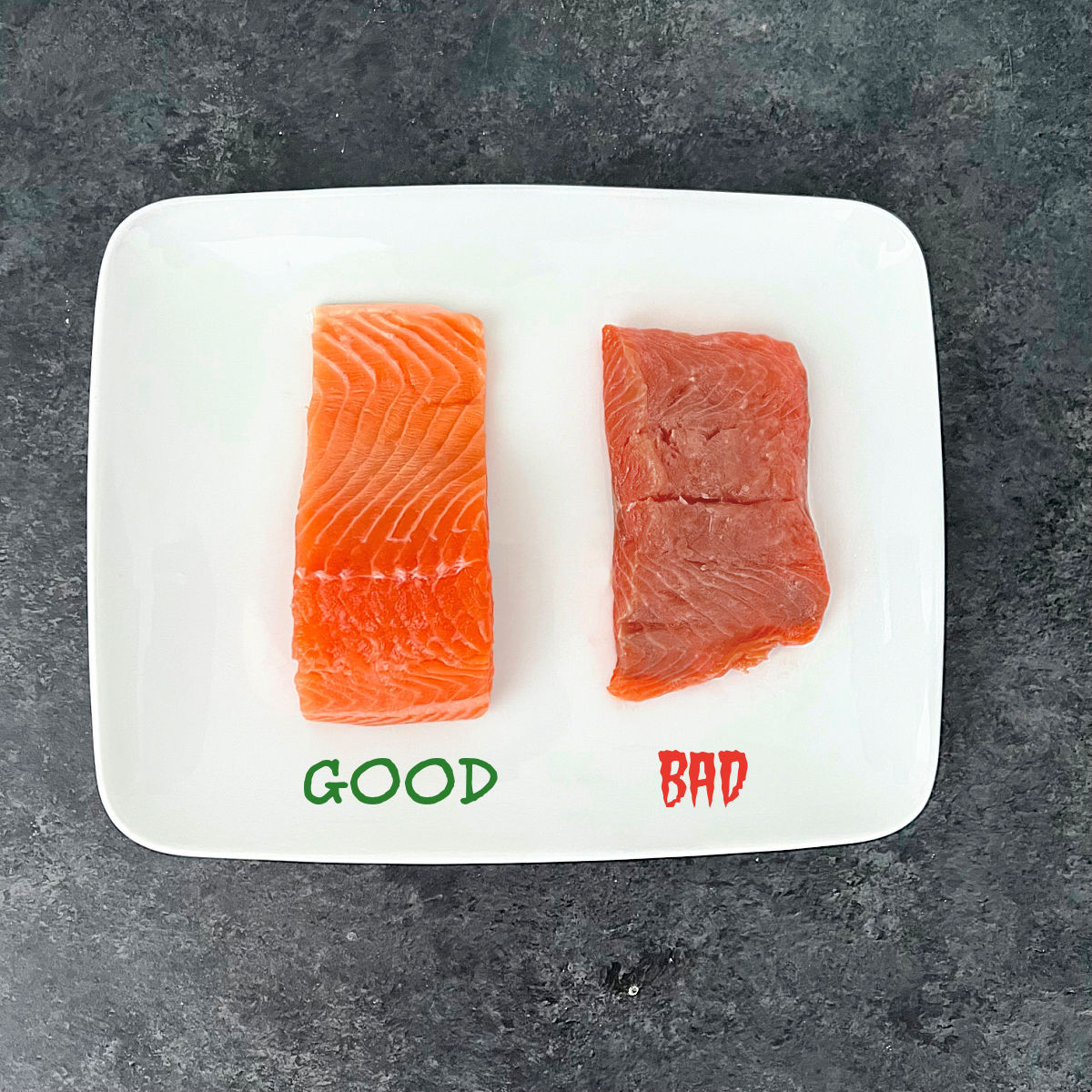
Not sure if your salmon has gone bad? There are a few things you should check check including the expiration date, how the salmon looks, how it smells, and how it feels.
Salmon that is old or spoiled will look dull or gray and may have a white, filmy residue. In addition, it will have fishy or ammonia-like odor and a mushy or slimy texture.
Following the guidelines from the FDA, here's how to safely select your seafood like salmon and decide if it's past its prime:
1. Check the Expiration Date
Always check the expiration date when you buy salmon from the grocery store. Make sure you will have plenty of time to eat the salmon before the expiration date.
Don't eat the salmon if it's past the expiration date. You could get sick if you eat spoiled salmon. If you don't think you'll have the chance to eat it before the expiration date, you can always freeze it.
If you buy salmon directly from the seafood counter, it may not have an expiration date. In that case, follow the USDA guidelines and store it in the fridge for up to 2 days maximum.
2. Look At It
One of the most important things to check when determining freshness is the color of the salmon. Fresh salmon fillets should have a bright pink, orange or even red color with a fair amount of marbling (white lines running through it) and shiny skin.
Note that the color of the salmon depends on the type of salmon and where it comes from. Interestingly, wild salmon get their color from the creatures they eat like shrimp and krill.
These crustaceans contain carotenoids, which end up giving salmon their characteristic hue. Because of the differences in their diets, some species of salmon like sockeye salmon, tend to have a deeper orange/red color, while other species like coho salmon have a lighter pink color.
Salmon that's past its prime, however, will look dull or gray. It may even have dark spots, discoloration or mold. These are all signs of spoilage.
If there is a milky, slimy residue on the salmon, this is a clear indication that the salmon is bad. Throw it away!
If you're buying a whole salmon, be sure to check the eyes. Fresh, high-quality salmon should have clear, bright eyes that bulge outwards. If the eyes have a film over them or seem sunken in, then it's not fresh.
3. Smell It
One of the best ways to tell is salmon has gone bad is to smell it. Although it may seem counterintuitive, fresh fish, including salmon, should not have a fishy odor. Raw salmon should have a mild scent and should smell like the ocean.
If the salmon has a strong fishy smell, it's probably not fresh. A sour or ammonia-like smell is a sure sign of bad fish.
4. Touch It
Fresh salmon flesh should have a firm texture and should bounce back when you press on it. If you press on the salmon and it feels mushy or like it's going to easily break under your fingers, that's a bad sign.
When you run your hand along the salmon filet, it should be glide easily. If the salmon has a slimy or sticky texture, toss it!
What Happens If You Eat Bad Salmon?
If you eat old salmon that has gone bad, you may experience signs and symptoms of food poisoning from overgrowth of bacteria or other microorganisms.
Symptoms of of food poisoning include nausea, vomiting, and diarrhea. You may also experience headache, dizziness, and fatigue.
Although it's disappointing to realize a delicious salmon filet has gone bad, it's better to be safe than sorry. So if a fish smells "off" or looks slimy, toss it. Remember, when in doubt, throw it out!
How To Store Salmon
Salmon is a delicate fish and it can go bad quickly if you don't store it properly. So it's important to follow the basic rules of food safety.
Try to keep salmon out of the danger zone. The USDA defines the danger zone as being between 40°F and 140°F (4.4°C to 60°C). At these temperatures, bacteria can multiply rapidly and cause food poisoning.
You can store salmon at room temperature for up to 2 hours, but no longer. After two hours, refrigerate the salmon or throw it away.
Raw salmon can be kept in the fridge for 1-2 days from the date you purchased it. If you're not going to eat it within 2 days, move it to the freezer, where it can be stored for months.
Once salmon is cooked, it can be stored in the fridge for 3-4 days.
How To Eat Salmon
Now that you know how to tell if salmon is fresh or not, you're ready to cook this delicious fish! Salmon is a versatile fish- you can prepare it in so many different ways.
Some of my favorite ways to cook it are to simmer it in rich curries, bake it in the oven, air fry it, or grind it up and make it into burgers. I love to add instant flavor to my salmon recipes with my homemade salmon dry rub.
Looking for some side dish ideas? Try serving your salmon with my quinoa with roasted vegetables, roasted asparagus and grape tomatoes, air fryer butternut squash or lemon risotto with peas and asparagus.
Tasty Salmon Recipes
Now that you know how to pick the freshest salmon, here are some tasty recipes to try out!
Salmon FAQs
Yes, you can store cooked salmon in the fridge in an airtight container. To prevent the growth of bacteria, salmon should be stored in the refrigerator within 2 hours of cooking it.
If stored properly, cooked salmon will last in the fridge for 3-4 days. To properly store cooked, leftover salmon, place it in an airtight container or wrap it tightly with plastic wrap or aluminum foil. Store it in the coldest part of the fridge like the bottom shelf.
According to the USDA guidelines, raw salmon can be kept in the fridge for only 1-2 days from the day you purchase it. If you're not going to eat it within 2 days, move it to the freezer, where it can be stored for months.
Salmon can be frozen raw or cooked. Both raw and cooked salmon can be stored in the freezer for 6-9 months. Frozen cooked salmon should be consumed within 1-3 months for the best quality and flavor.
The best way to thaw frozen salmon is to put it in the fridge overnight. This will allow the salmon to thaw slowly and evenly, which will help preserve its quality. If you're in a rush, you can thaw salmon in cold water. To do this, put the frozen salmon in a resealable plastic bag and submerge it in a bowl of cold water. Change the water every 30 minutes until the salmon is fully thawed.
The USDA recommends that you should cook salmon to an internal temperature of 145°F. If you're planning on eating raw sushi, make sure it's sushi-grade salmon from a reputable source.

YOUR PATH TO WELLNESS STARTS HERE!
Get my best healthy recipes and tips sent straight to your inbox!


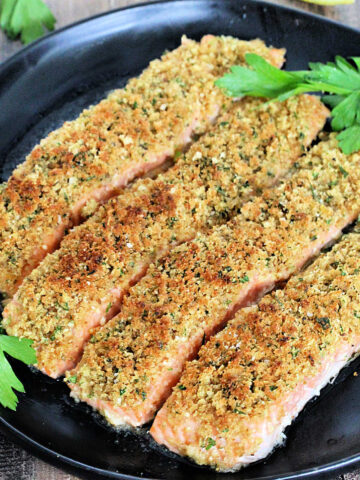
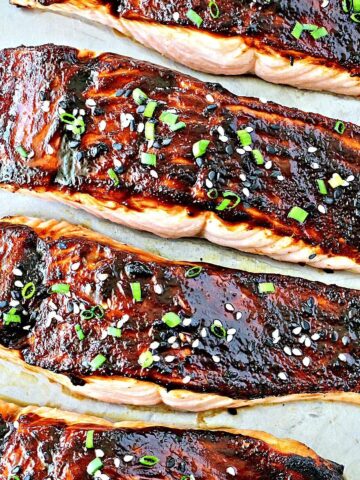

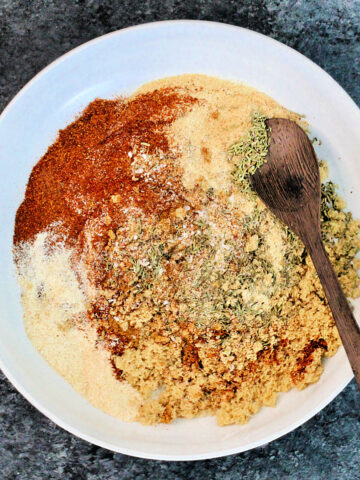
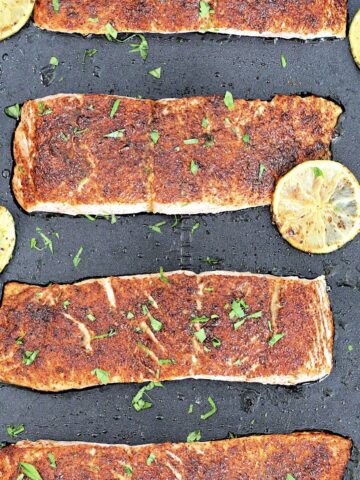

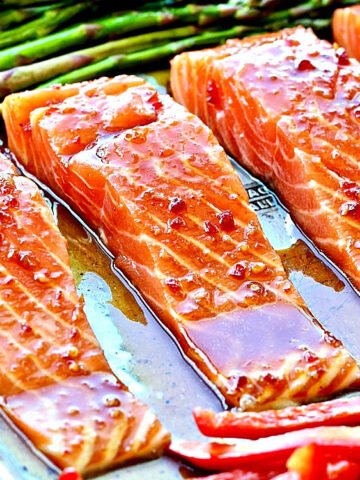
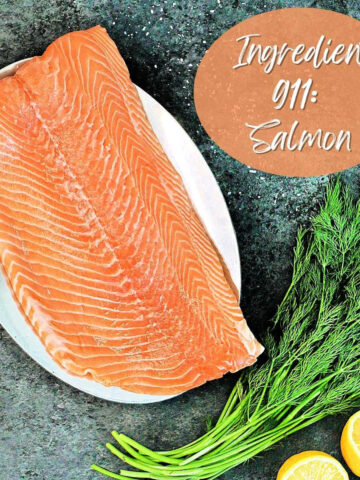


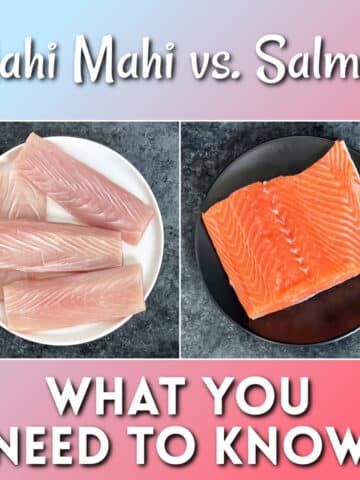


Comments
No Comments